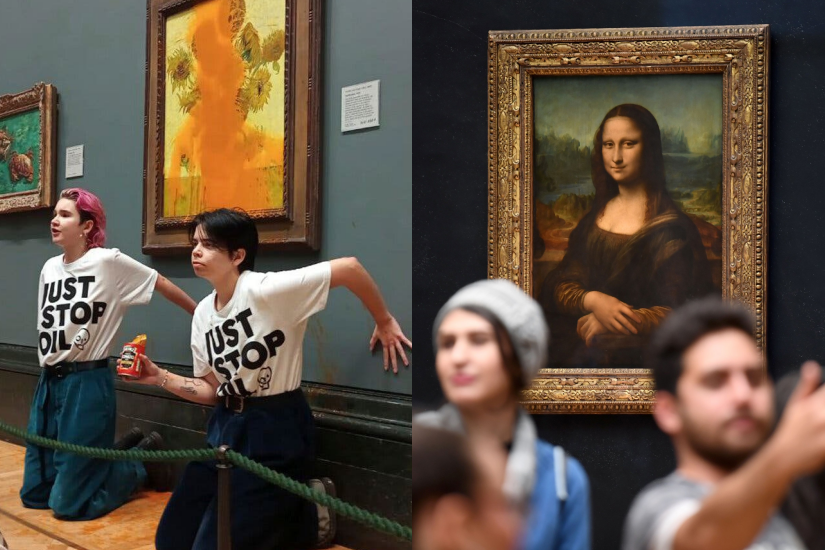Last Friday, two protesters from the “Just Stop Oil” organization disguised themselves as regular visitors and entered the National Gallery in the UK. They took advantage of the distracted security guards and splashed canned tomato soup on Van Gogh’s famous painting “Sunflowers,” calling on people worldwide to pay attention to the UK government’s oil development projects. The incident shocked the entire art world.
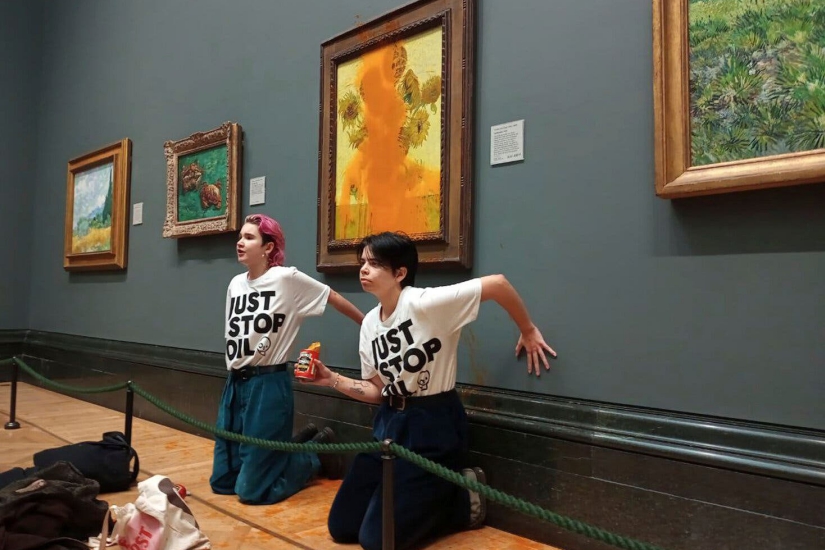
Although the painting was not damaged due to the protection of the glass cover, this incident still angered a group of art lovers, believing that such intense actions should not be used to voice certain issues. In fact, this type of sudden protest is not the first time, and in the past, there have been similar demonstrators who stormed into art galleries for flash protests, causing some famous paintings to innocently become “victims.”
1. Leonardo da Vinci “Mona Lisa’s Smile”
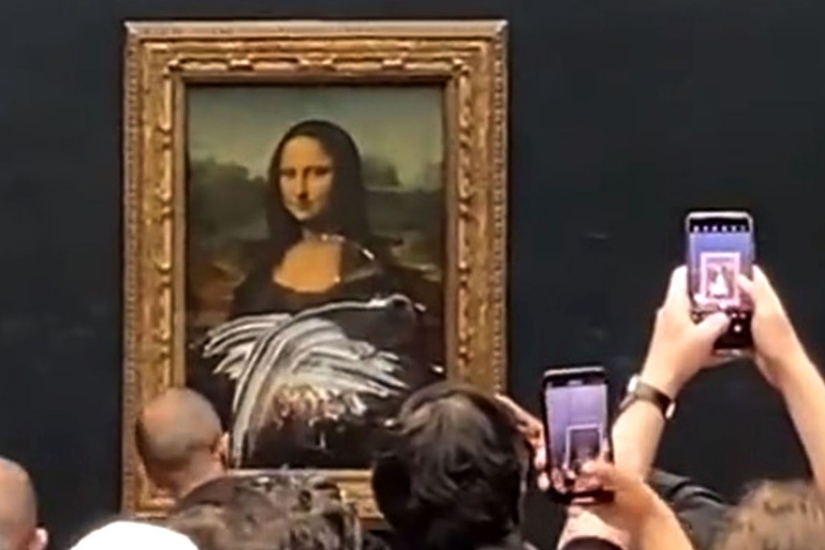
In May of this year, a man wearing a wig disguised himself as a disabled woman to enter the Louvre Museum in Paris, France. He then wheeled himself to the masterpiece of the museum – Da Vinci’s “Mona Lisa”. He quickly took off the wig, jumped out of the wheelchair, threw a cake at the painting, smeared it with cream, and then scattered rose petals everywhere.
Aquí el momento en que se llevan a quien le aventó un pastel a la Monalisa.pic.twitter.com/HBayMOdcKV
— Alejandro Alemán (@elsalonrojo) May 29, 2022
The man shouted loudly, “Someone is destroying this earth… all artists, think about the earth. That’s why I did this. Think about the earth.” The security guards then removed the man and reported him to the police. Fortunately, the painting was placed in a reinforced protective case with controlled temperature, humidity, and bulletproof features in 2005, so it was not damaged.
2. Vincent van Gogh’s “Peach Trees in Blossom”

In June of this year, two young women from the UK, members of the environmental protest group “Just Stop Oil,” entered the Courtauld Gallery in London and glued themselves to the frame of Vincent van Gogh’s landscape painting “Peach Trees in Blossom” (1889). According to the organization, the reason for targeting van Gogh’s pastoral scene is because the Provence region it depicts may face severe drought due to government oil and gas development projects. The protesters also stated that this action was to urge “art institutions to join their citizen resistance movement.”
3. Da Vinci’s “The Last Supper” (Replica)
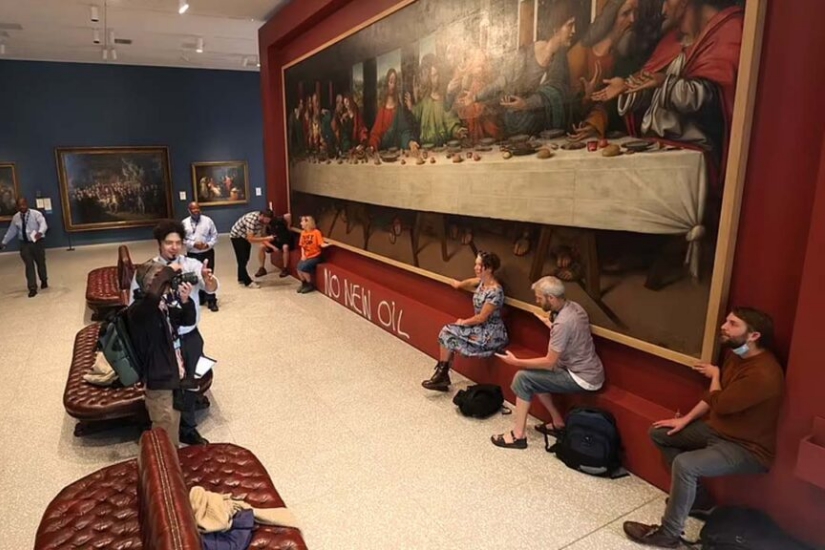
In July of this year, a total of 5 environmental activists broke into the Royal Academy of Arts in London. This time, they targeted the 16th-century creation of the Italian Renaissance master Da Vinci, “The Last Supper.” They applied glue to their palms and then stuck them under the frame, using a technique similar to previous incidents, and sprayed “no new oil” below the artwork, urging the government to stop issuing licenses for oil and gas development. They chose “this beautiful masterpiece” to protest because “the future has never been so bleak.”
4. Picasso “Portrait of a Woman”
The above-mentioned paintings were not directly damaged, but the following one, Picasso’s “Bust of a Woman,” was not so lucky. The incident occurred in December 2019, when this piece worth 200 million Hong Kong dollars was maliciously destroyed by a 20-year-old man during its exhibition at the Tate Modern.
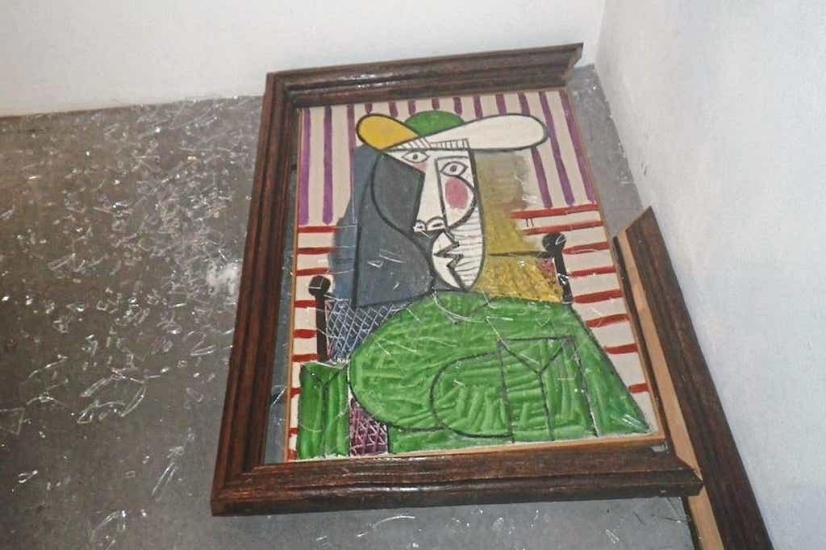
According to reports, the man stayed in front of the painting for about 3 minutes, then took off his coat and swung an iron chain at the painting. After the protective glass shattered, he tore the painting off and threw it to the ground, shouting, “I am performing performance art.” The man was then arrested on the spot. The painting was created by Picasso in 1944, featuring his lover and muse Dora Maar as the main character. Due to the extent of the damage, the cost of restoration alone has reached £450,000, and will take at least 18 months, causing the museum to suffer significant losses.
For more similar destructive events, whether the perpetrators are seeking attention or hoping to express concern about climate issues, this behavior undoubtedly poses a significant threat to precious works of art. While this may attract public attention to the event in the shortest time possible, it is worth considering whether there are better ways to make appeals or express oneself.

